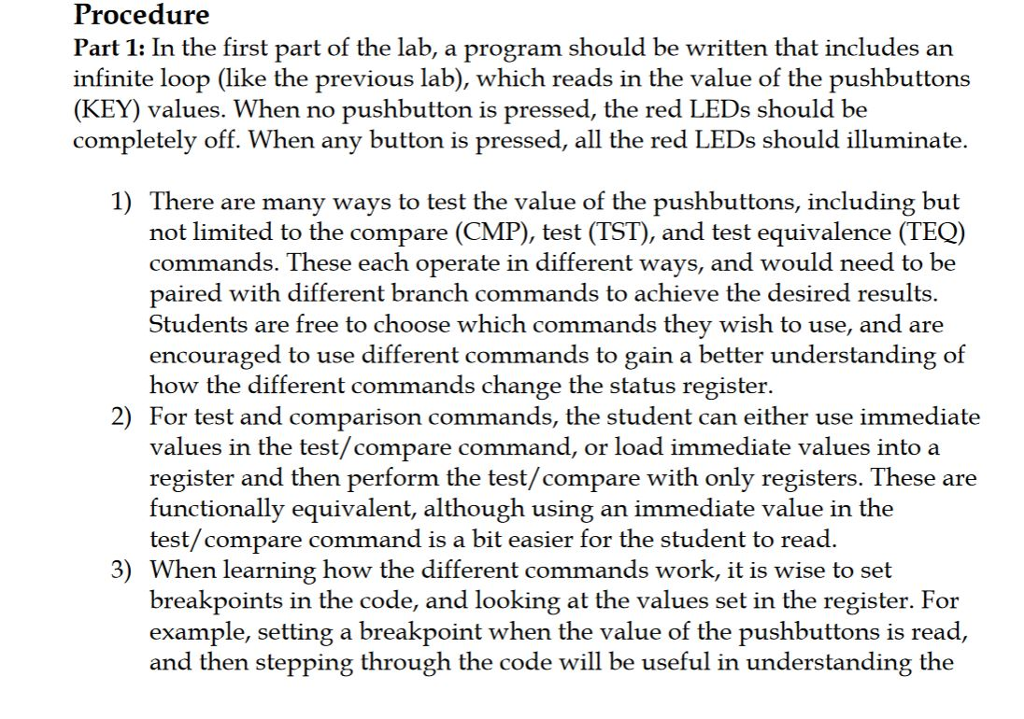
Procedure Part 1: In the first part of the lab, a program should be written that includes an infinite loop (like the previous lab), which reads in the value of the pushbuttons (KEY) values. When no pushbutton is pressed, the red LEDs should be completely off. When any button is pressed, all the red LEDs should illuminate. 1) There are many ways to test the value of the pushbuttons, including but not limited to the compare (CMP), test (TST), and test equivalence (TEQ) commands. These each operate in different ways, and would need to be paired with different branch commands to achieve the desired results Students are free to choose which commands they wish to use, and are encouraged to use different commands to gain a better understanding of how the different commands change the status register. For test and comparison commands, the student can either use immediate values in the test/compare command, or load immediate values into a register and then perform the test/compare with only registers. These are functionally equivalent, although using an immediate value in the test/compare command is a bit easier for the student to read 2) 3) When learning how the different commands work, it is wise to set breakpoints in the code, and looking at the values set in the register. For example, setting a breakpoint when the value of the pushbuttons is read and then stepping through the code will be useful in understanding the Procedure Part 1: In the first part of the lab, a program should be written that includes an infinite loop (like the previous lab), which reads in the value of the pushbuttons (KEY) values. When no pushbutton is pressed, the red LEDs should be completely off. When any button is pressed, all the red LEDs should illuminate. 1) There are many ways to test the value of the pushbuttons, including but not limited to the compare (CMP), test (TST), and test equivalence (TEQ) commands. These each operate in different ways, and would need to be paired with different branch commands to achieve the desired results Students are free to choose which commands they wish to use, and are encouraged to use different commands to gain a better understanding of how the different commands change the status register. For test and comparison commands, the student can either use immediate values in the test/compare command, or load immediate values into a register and then perform the test/compare with only registers. These are functionally equivalent, although using an immediate value in the test/compare command is a bit easier for the student to read 2) 3) When learning how the different commands work, it is wise to set breakpoints in the code, and looking at the values set in the register. For example, setting a breakpoint when the value of the pushbuttons is read and then stepping through the code will be useful in understanding the







